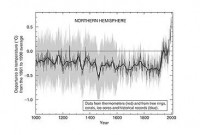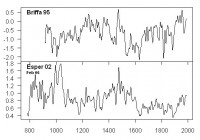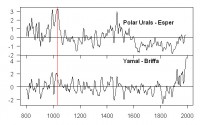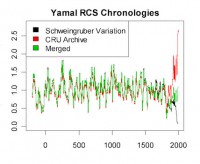By Kimberley Strassel, Wall Street Journal Potomac Watch
Give the Environmental Protection Agency credit: At least it practices equal opportunity censorship of its employees.
Dr. Alan Carlin, a 37-year agency veteran, was muzzled earlier this spring. Dr. Carlin offered a report poking holes in the science underlying the theory of manmade global warming. His superior, Al McGartland, complained the paper did “not help the legal or policy case” for Team Obama’s decision to regulate carbon, told him to “move on to other issues,” and forbade him from discussing it outside the office.
Now come Laurie Williams and Allan Zabel, married, and each with more than 20 years tenure at the EPA. They too are dismayed by Democrats’ approach to climate, though for different reasons. Dedicated environmentalists, they created a 10-minute YouTube video arguing Congress’s convoluted cap-and-trade bill was a “big lie” that is too weak. They instead propose imposing taxes, lots of them, on fossil fuels.

Their views aren’t new. Earlier this year the duo sent a letter to Congress making the same case. The video has been out for some time, and the pair got clearance from the EPA before they ran it. Mr. Zabel in the opening notes that “nothing in this video is intended to represent the views of EPA or the Obama Administration.” It wasn’t until the couple ran a high-profile op-ed in the Washington Post in October that the agency nerved out.
A few days after the op-ed, Ms. Williams and Mr. Zabel were contacted by an EPA ethics official telling them to remove the video or face “disciplinary action.” EPA says the clearance was subject to “ethics guidelines,” which it claims the couple violated. The agency said the video could go back up if it was altered to remove a picture of an EPA building, and to delete mentions of their EPA employment. In particular, Mr. Zabel was not to say that he’d worked on cap-and-trade issues.
Meet the Obama EPA, and its new suppressing, paranoid style. It was the president who once ripped the Bush administration for silencing scientific critics, and it was EPA Administrator Lisa Jackson who began her tenure promising the agency would operate like a “fishbowl.” But that was before EPA realized how vastly unpopular is its plan to usurp Congress and regulate the economy on its own, based on its bizarre finding that CO2 is a danger to health.
Faced with unhappy members of Congress, dissenting employees, an opposition business community, and a backlash on the science, Mrs. Jackson is no longer a fan of open government. The goal now is to rush the agency regulations through as quickly as possible, squashing threatening dissent and deflecting troublesome questions.
Reps. Jim Sensenbrenner and Darrell Issa recently put out a report documenting the EPA’s slippery handling of its carbon rule, in which it truncated the process and dismissed contrary views. The Chamber of Commerce has been waiting all year for a response to its request for a hearing into the science underlying the regulation. Not a peep.
Alaska Sen. Lisa Murkowski in September requested a discussion with the agency about carbon regulation and legislation. That discussion has yet to happen. Louisiana Sen. David Vitter recently quizzed Mrs. Jackson about a provision in Congress’s climate legislation that would give the president awesome power over energy regulation. Mrs. Jackson said it was a “premature” discussion. “The EPA is playing dirty to get green,” says Rep. Sensenbrenner. “The agency can’t be allowed to silence its scientists just because what they say threatens to delay its political agenda.”
There is a legitimate debate over what right administrations have to clamp down on rebel staffers, yet the EPA’s stomp on dissenting views appears unprecedented. Dr. Carlin says he’s been treated “relatively well” since the blow-up. Yet he has been forbidden from working on climate or attending climate seminars. When asked how this compares to previous administrations, Mr. Carlin says that years ago he actually believed the science was “correct” - a position that put him at odds with the Bush administration.
Mr. Carlin knew one of his top supervisors back then disagreed with him. “At no time did he say don’t work on it, don’t express these views which are contrary to mine. And he in effect allowed me to work on climate change for five years. . . . I had no problems until March of this current year.”
The problem for the EPA is that the Williams-Zabel dust-up is growing, and underlining the gap between the agency’s transparency rhetoric and reality. The very media and activists who ran hit jobs on Mr. Carlin are, of course, now furious the agency is quieting card-carrying environmentalists. Public Employees for Environmental Responsibility, a left-leaning outfit that represents scientists has latched on to the Williams-Zabel video, is lamenting that “EPA is abusing ethics rules to gag two conscientious employees” and promising to assist with any litigation.
If the EPA were so proud of this power grab, it ought to be eager to have a discussion, right? See post here.
MOT: Climate catastrophe cancelled, Finnish Broadcasting Co. YLE, TV1, Nov 11th 2009 at 8.00 pm.
Voiceover (VO), reporter Martti Backman: Governments around the world are preparing for a grand climate conference, which should decide how humanity responds to the threat of a climate catastrophe. Negotiations are under way to replace the Kyoto treaty with a new treaty of Copenhagen. The threat is based on assessments by the Intergovernmental Panel on Climate Change, the IPCC. According to the panel, the Earth is going through an unprecedented period of temperature increase, caused by man and his carbon dioxide emissions from burning coal and oil. The Earth’s climate has always been changing. But now we are told that warming is happening faster than ever. The view is based on this figure.

(Picture: The global warming hockey stick graph. Music: Electric organ sounds from an ice-hockey game)
VO: This ten-year-old figure, dubbed as the hockey stick, was meant to revolutionize the dominant view of global climate history. The stick’s handle stretches for almost a thousand years, creating an impression of a steady climate, and its’ rising blade in the late 1900’s is proof of sudden, strong warming, which is caused by man.
According to the older view, climate has naturally varied considerably over the past millennium, and in the middle ages it was clearly warmer than today. But in the hockey stick graph, the Medieval Warm Period and the little ice age after it have disappeared. The hockey stick was promoted to honorary status in the IPCC’s third assessment report’s cover. It became the logo of catastrophic climate change. The stick was used to back up the claim that, 1998 was the warmest year of the millennium.
Steve McIntyre: “At the time I was doing mining exploration business and I just wondered, in the most casual possible way, how they knew that. So that led me start looking at the data and six years later, I’m still doing it”.
VO: The Canadian statistician Steve McIntyre had doubts about the scientific strength of the hockey stick graph, and he decided to unravel the numbers behind it, with the diligence of an auditor. The father of the hockey stick, professor Michael Mann resisted McIntyre’s efforts to get hold of his research data, and it wasn’t until 2003 that McIntyre succeeded in getting access to the data.
McIntyre: “It turned out that he had modified a principal components method incorrectly and the modified method produced hockey stick-shaped graphs ninety-nine percent of the time. It also emphasized a class of proxies, strip-bark bristlecone pines that previous authors had said were not actually a temperature proxy”.
VO: Temperature records measured by thermometers are at most 150 years long. Earlier histories have to be reconstructed with so-called proxies, or surrogate thermometers. Past climates are deduced for example from tree rings and lake sediments or varves. The shape of the hockey stick was to a large extent caused by tree rings from a few North American bristlecone pines. McIntyre succeeded in deconstructing the stick. The United States National Academy of Sciences set up a committee to investigate his findings. The committee found that, McIntyre had been right to question the temperature reconstruction and announced that, bristlecone pines should no more be used as proof of climate change.
Steve McIntyre, an outsider in climate science, had succeeded in breaking Mann’s hockey stick, the icon of the climate change movement. But the story was not over. A whole factory started to produce new sticks to replace the broken one.
McIntyre: “There was another class of study, which used a series of tree rings from a scientist called Keith Briffa, from Northern Russia, from a site called Yamal, and this had an even bigger hockey stick-shape than the Michael Mann - hockey stick and this one - has been used in multiple studies as well and so, over the past few years I’ve been trying to get information about how this particular series was constructed”.
VO: Keith Briffa is one of the big names in climate research. He is a professor in the IPCC’s scientific stronghold in Britain, the Climate Research Unit at the University of East Anglia. He is also a lead author of the past climate chapters of the IPCC’s assessment reports. McIntyre had to fight for three years to get Briffa’s Yamal data under his microscope. But a lot happened before that.
The well-known medieval warmth was disturbing to the scientists close to the IPCC, the so-called hockey team. In the mid 1990’s the American geologist David Deming received an astonishing e-mail, in which one prominent climate researcher announced to his colleagues: Actor’s voice: “We have to get rid of the medieval warm period.”
(Picture of Deming’s written statement from the Senate Environmental committee website)
VO: Deming testified about the e-mail at hearings in the United States congress.
Soon after this e-mail, Keith Briffa published a study, where the millennial temperature history looked like this: (the upper curve appears on screen)

VO: The Briffa study was based on a very limited number of tree ring samples from the so-called Polar Urals region in Siberia. With the help of just three short tree ring series he claimed that the year 1032 in the middle of the balmy middle ages, had been the coldest in the millennium. And the modern period appeared to be very warm. A real hockey stick. A couple of years later, Briffa’s colleague returned to Siberia to drill new tree ring samples. When they were added to Briffa’s original data, the curve looked surprisingly like this: (lower curve appears on screen, the curves merge). The hockey stick had disappeared, and the medieval warm period had been reinstated as warmer than the present.
McIntyre: “Unfortunately, this updated Polar Urals result was never published and Briffa, in his works since 2000, has made no – - reference to this updated study”.
VO: The updated Polar Urals series was forgotten. Instead, Briffa replaced his original weak Polar Urals data in 2000 with new tree ring series drilled from the Yamal peninsula hundreds of kilometers away. With this data, the climate reconstruction looks like this: (lower curve appears).

VO: The blade of the hockey stick rises at the end of the millennium stronger than ever and the medieval warm period is clearly shadowed by it, if not made to vanish completely. Yamal data became the most important temperature proxy for all later hockey sticks, and it was used in at least seven temperature reconstruction studies.
But McIntyre knew something about the construction of hockey sticks, and he could not believe in the Yamal curve. The contradiction to established paleoclimatic knowledge was simply too big.
McIntyre: “And the question is just, why was the Polar Urals update not reported? And if the Yamal series was going to be used rather than Polar Urals, that should have been clearly explained to readers. The criteria for preferring one rather than the other should have been also clearly explained”.
VO: Finnish Lapland lies at the same latitudes as Yamal, and there are plenty of Finnish studies on past climates based on tree rings. These studies are considered to be among the best in the world, for their sample quality as well as methodologically. What kinds of hockey sticks have been found in them?
Kari Mielikainen, professor of forest research (Metla, Finland): “We have this long series going back over 7,000 years, and there’s no hockey stick there.”
VO: Briffa’s Yamal hockey stick was published in the prestigious journal Science. McIntyre asked for a copy of the raw data from Yamal.
McIntyre: “Briffa refused. The editors of Science refused to require Briffa to provide the measurement data.”
VO: It took McIntyre three years to get hold of the data, although one of the most important rules in science is that, raw data should be made available to anybody who is interested in checking and replicating a study.
Finally Briffa made a “mistake”. He published yet another article based on the Yamal data in a journal of the British Royal Society. The prestigious scientific society held on to the principle of data transparency and forced Briffa to make his raw data public. In September this year, the Canadian climate auditor had his forebodings confirmed.
McIntyre: “So after, after sort of, three years of frustration and trying to examine the data that Briffa had used and probably four years of people saying that this data supported the Michael Mann -work on other grounds, it was really quite frustrating to find that it was built up on ten trees that had been not randomly selected”.
VO: So the Yamal data included only ten living trees from the 1990’s, and the rapid growth of these individuals caused the steep rise of the hockey stick blade. In Finnish dendrological studies, hardly anything would be said based on just ten trees. What’s demanded is at least 50 trees for each year, and several other quality criteria as well. How have these criteria been observed in the Yamal data?
Kari Mielikainen (professor of forest research, Finnish Forest Research Institute Metla): “Rather weakly it seems. It looks like there are problems with both cohort structure and also the regional distribution (of the sample).”
VO: McIntyre conducted a simple statistical exercise. He replaced the 10-tree Yamal sample by a larger 34-tree sample collected from the same area. (In this figure) the added material is depicted with the black curve, and the combination of both data sets as a green curve.

VO: The hockey stick blade disappears, or actually turns downwards. And the medieval period is again warmer than the present.
McIntyre: “I think that the preferential selection of Yamal, rather than Polar Urals, biases the result that’s presented to the public”.
VO: All good proxy-based climatic reconstructions should compare the results with adjacently located measurements from thermometers. When this is done in the Yamal area, it emerges that none of the near-by weather stations have recorded warming that would explain the hockey stick graph. In other words, if those ten trees have grown abnormally fast in the 1990’s it is due to something else than heat.
Mielikainen: “If you choose one convenient series just to prove a point, be it a hockey stick or anything, you are definitely on a wrong track.”
VO: Problems with tree ring studies will be addressed next summer in an international scientific congress chaired by Mielikainen in Rovaniemi (Finnish Lapland).
VO: The author of the Yamal reconstruction, Keith Briffa, has disputed the criticism aimed at his study, but it still draws heated debate. Briffa’s employer, the IPCC-affiliated climate research unit CRU maintains a global database of temperature measurements from weather stations. This database is central to the conclusion that global temperatures have risen to a worrying extent during the past 40 years. The CRU has combined thermometer readings into a global average with a method which it refuses to disclose, but which allegedly has brought added value to the raw data. McIntyre has requested the data from CRU director Phil Jones, but he has been turned down, and others as well.
McIntyre: “An Australian named Warwick Hughes had asked for the data and Warwick Hughes had published some articles that had been critical of how the temperature histories had been prepared, and Jones said “Why should I send - we have twenty-five years invested in this, why should I send the data to you when your only objective is to find anything wrong with it?”, which is a very unscientific statement.”
VO: The CRU database is the most important scientific justification for the demands that the most ambitious treaty in mankind’s history should be finalized in Copenhagen in December. In spite of this, there is no way to replicate its’ validity.
Recently the CRU director Phil Jones has announced that the original measurement data does not exist anymore because of data storage difficulties. A dog ate the world’s most important scientific measurement homework.
See more of McIntyre and Richard Lindzen here.
By Ian Talley, Wall Street Journal
WASHINGTON—Key Senate Democrats Tuesday said it is unlikely there will be any more major committee action on climate-change legislation this year, the strongest indication yet that a comprehensive bill to cut greenhouse-gas emissions won’t be voted on until at least next year.
Although the Senate Environment Committee last week approved a version of the bill, the proposal will face strong revisions from moderate Democrats, particularly from senators on the Finance and Agriculture committees.
“It’s common understanding that climate-change legislation will not be brought up on the Senate floor and pass the Senate this year,” Senate Finance Chairman Max Baucus said on the sidelines of a caucus lunch.
Mr. Baucus, a Montana Democrat, said he planned to hold a number of hearings on climate legislation and eventually mark up a bill in his panel. “But I don’t know that I can get a bill put together by this year, as important as climate-change legislation is,” he said.
Mr. Baucus was the lone dissenting Democratic vote on the Environment Panel last week because he wanted weaker emission-reduction targets and stronger provisions to protect energy-intensive industries and encourage clean-coal technologies.
“I wouldn’t want to bet my paycheck that all the relevant committees will report out legislation by the end of this year,” said Sen. Thomas Carper (D., Del.).
Sen. Debbie Stabenow (D., Mich.), who is leading an effort by moderate, heartland Democrats to protect manufacturing and agriculture industries, said committees were no longer under any timetables to produce legislation.
Ms. Stabenow said the Agriculture Committee - which has jurisdiction over climate provisions fundamental to containing costs and cutting emissions in the farming and forestry sectors--might not even debate or vote on any provisions for the bill.
“The question is whether or not Agriculture actually marks up something or it gets done on the floor,” she said.
Sen. Blanche Lincoln (D., Ark.), who chairs the Agriculture Committee, is facing a tough re-election campaign next year, and handling a highly controversial climate-change bill in her panel may risk alienating voters.
In the face of the hard-fought debate on health-care legislation--not to mention appropriations bills and finance-reform proposals - Senate Majority Leader Harry Reid (D., Nev.) has dropped his earlier schedules for committees. A Reid aide said he hadn’t drafted any new timetable for panel action on climate change.
Even Sen. John Kerry (D., Mass.), a climate-bill champion who last week said committees should have climate legislation processed by the end of the year, Tuesday backed off such expectations. “I don’t want to create artificial deadlines which get in the way of our being methodical about this,” he said.
Instead, Mr. Kerry said he is focused on getting the 60 votes necessary to pass controversial climate legislation—a higher margin than a simple majority and no mean feat. “The main thing to do here is to build the adequate base of support and consensus,” he said. See post here.


